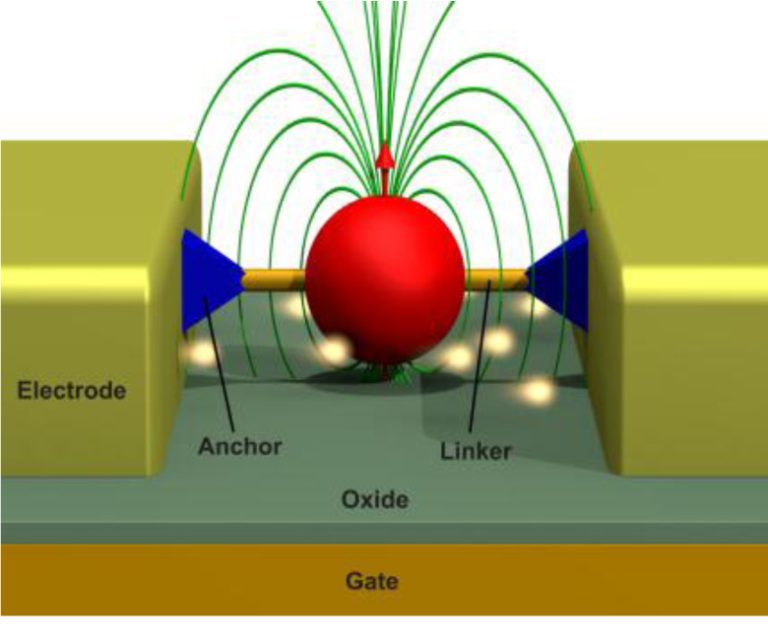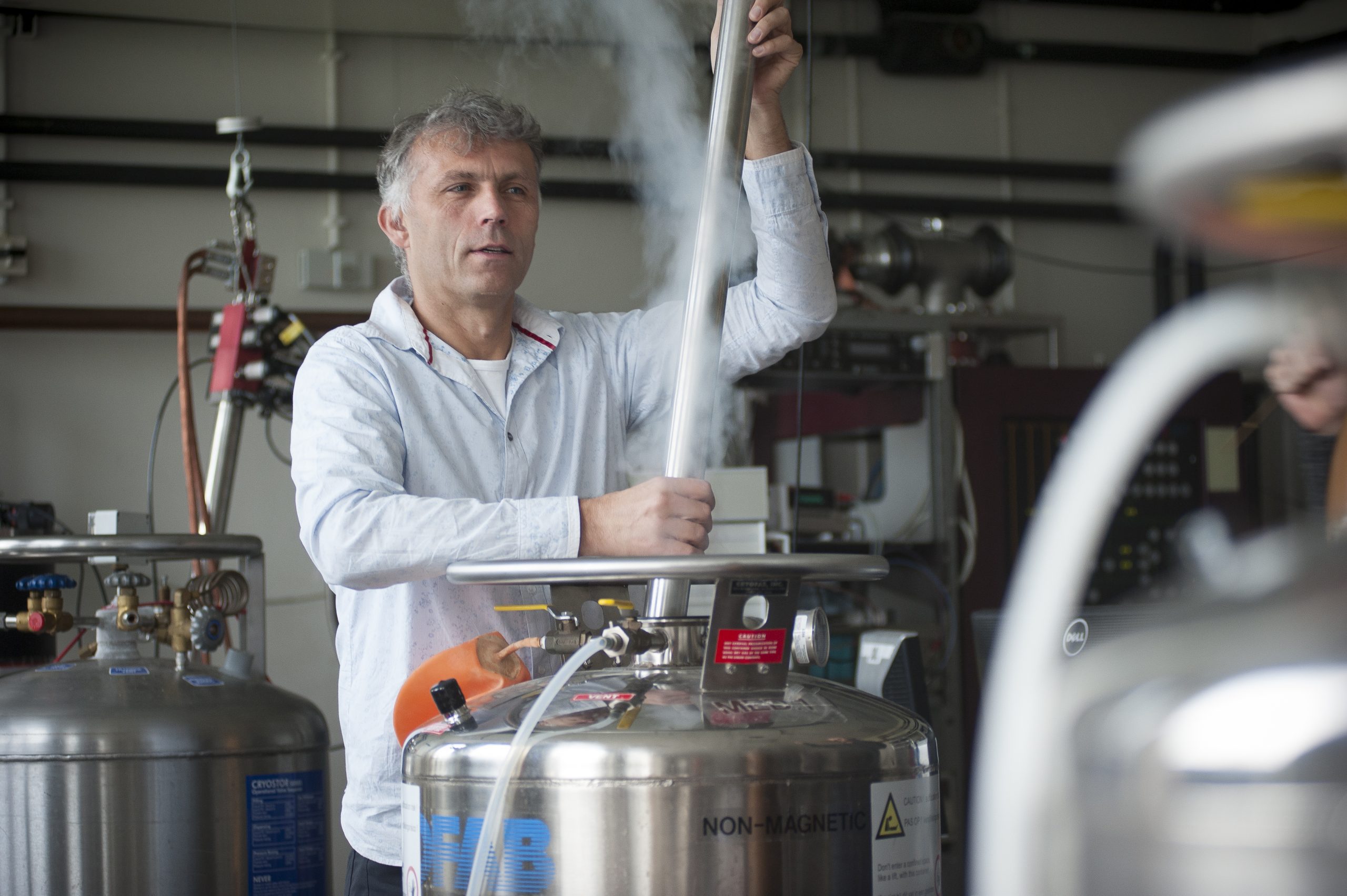Professor Herre van der Zant (TNW) wants to study magnetic molecules and to apply their characteristics to devices. Both Dutch FOM and the European Research Council rewarded his proposal.
Van der Zant’s proposal reads as an invitation to an expedition into the near unknown. Tiny magnets based on single molecules have been around since the 1990s, he argues. Solid-state electron spin devices, like quantumdots, are also well known. But very little is known of the possibility of using a single molecular magnet in a solid-state device by hooking it up to electrodes. “Consequently, present-day nanotechnology does not exploit the wide range of functionality that they offer,” argues Van der Zant in his proposal.
“The story of molecular magnets began with Manganese-12,” he says. The twelve electron spins team up to create one giant spin, causing the molecule to act as a nanoscale magnet with the giant spin directed along a preferred axis. Later other types of single molecule magnets or SMM’s were found containing four iron atoms or, the newest rage, a single terbium (Tb) atom. Both nuclear and electron spins seem to contribute to the molecules’ magnetism.
Such experiments have to be conducted at cryogenic temperatures to prevent the thermal energy from flipping the molecules’ magnetic orientation. Cooled down, the orientation of the magnetic spin may for years. Knowing that most electron spins will be disturbed (or: lose their quantum coherence) within microseconds, SMM’s seem like a promising medium for (information storage) bits.
In a recent publication (Nature, 16 Augustus*) colleague researchers report how they succeeded in reading a single nuclear magnetic spin with a molecular spin transistor. “The next step should be to demonstrate quantum manipulation of the single nuclear spin and to perform qubit operations on it,” Van der Zant comments in a joining News & Views article**.
And that’s exactly the niche that Van der Zant has targeted with his research proposal. He recognises the versatility that chemistry offers to cheaply make molecules with predefined sensitivity to light, chemicals or electric potentials. He also recognises that if certain characteristics are to be used in a device, it will probably have to be on a silicon substrate.


Hooked-up
A few years ago his group molecular electronics & devices placed a single molecule in-between two gold electrodes. “Now I think you could call us leading in the manipulation of single molecules”, says Van der Zant. Currently about one in ten devices actually functions. Not exactly industrudy-standard, Van der Zant admits, but good enough to screen various SMM’s.
His research project Controlling Molecular Spin at the Molecular Scale is both fundamental and applied. It classifies as fundamental research in the sense that it targets material properties at the quantum level. And it’s applied in the sense that the project aims to make these properties accessible for the use as data storage, quantumbits, sensors or switches.
With up to 2,5 million Euro funding from the ERC Advanced Grant), the research project is well funded for the next five years. Van der Zant works with chemists form the Netherlands and abroad to obtain various families of magnetic molecules.
Van der Zant: “In five years time, I hope that we will understand for a number of molecular compounds how one can manipulate their magnetism, how you can measure it and how you can use it in a device.”
*: Electronic read-out of a single nuclear spin using a molecular spin transistor, doi: 10.1038/nature11341
**: Reading a nuclear spin with electrons, Nature Nanotechnology, Vol.7, September 2012.



Comments are closed.